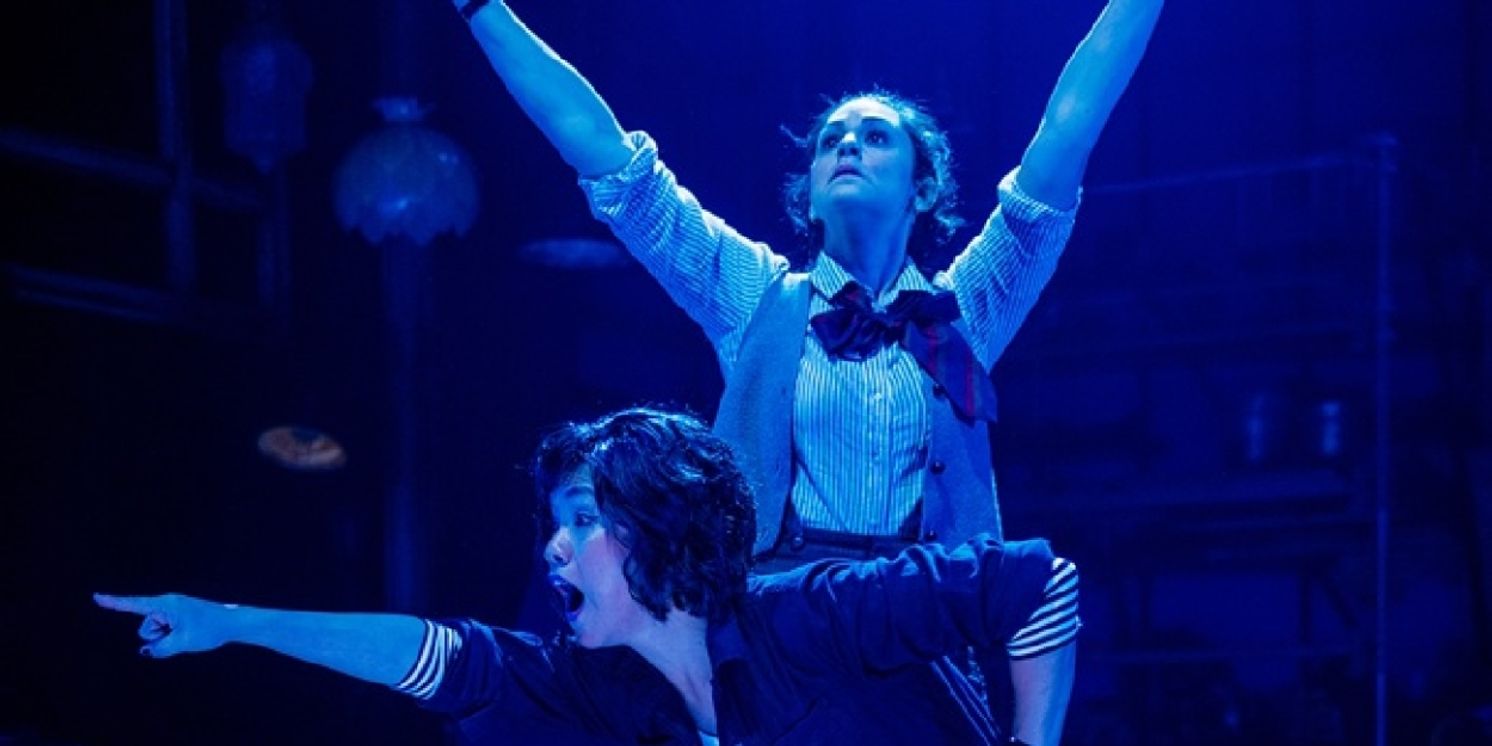Review: MS. HOLMES & MS. WATSON – APT. 2B at Arizona Theatre Company
The production runs through June 29th at Tempe Center for the Arts in Tempe, AZ.

“Cheerfully desecrating the stories of Sir Arthur Conan Doyle” is how playwright Kate Hamill’s MS. HOLMES & MS. WATSON – APT. 2B bills itself—and Arizona Theatre Company’s latest production, directed by Marcia Milgrom Dodge, makes good on that promise with gusto. This isn’t Sherlock Holmes as revisionist mystery—it’s Holmes as irreverent sketch comedy. And yet, it has its limitations.
For those familiar with Hamill’s body of work, this anarchic, genre-blurring remix was a logical next step in a progression of wildly theatrical, female-forward adaptations of literary classics—from Sense and Sensibility and Vanity Fair to Little Women and Dracula. She has consistently used the canon as a trampoline, launching bold reinterpretations that blend period pastiche with contemporary attitude. (Since then, she’s followed up with takes on Jane Austen’s Emma, Nathaniel Hawthorne’s The Scarlet Letter, and Homer’s The Odyssey.)
In this vein, MS. HOLMES & MS. WATSON – APT. 2B follows suit as an unrestrained feminist farce that trades Doyle’s deductive cool for comic mayhem.
The premise reimagines Holmes and Watson as women navigating a world tangled in the complexities of gender, power, and identity. Kelen Coleman leads as the irascible, emotionally unavailable Ms. Sherlock Holmes—a neurotic genius in running shoes whose razor wit cuts as sharply as her emotional detachment. Her performance lands somewhere between brilliant and exhausting. Regina Fernandez’s Watson, by contrast, is all warmth and rising exasperation—the underpaid, overstimulated partner who manages to ground the madness with just enough heart to keep us caring. Together, they make a dynamic duo for the TikTok age: odd-couple chemistry with a high IQ and low tolerance for fools.
Yet it’s Aaron Cammack who emerges as the show’s most versatile asset. With remarkable agility, he inhabits a parade of personalities—from the clueless Lestrade to a hilariously swaggering, Texas-style politician named Elliot Monk, to a peripatetic narrator puffing on a Sherlockian pipe. His transformations are fluid and captivating, injecting much-needed texture into a script that sometimes leans too hard on repetition and bombast.
Michelle Duffy also shines, doing double duty as the seductive, self-possessed Irene Adler and a wildly eccentric Mrs. Hudson. She moves between commanding sensuality and cartoonish delight with ease. Her Adler is sly and magnetic; her Hudson is the sort of landlord who might serve you tea in one hand and a severed toe in the other.
Visually, the set reflects its fractured sensibility. Chen-Wei Liao’s scenic design rejects the tidy architecture of mystery in favor of a cluttered, industrial sprawl strewn with props, bones, costumes, and the occasional bag of Doritos. The effect is deliberate chaos—a fever-dream workspace where anything can happen and often does. Gone are the traditional mechanics of farce; instead, the stage becomes a kinetic sandbox of agile performances and wild energy.
Hamill’s wit, absurdity, and social commentary find a perfect match in director Dodge, who drives the production with a giddy, madcap verve. In this world where logic gives way to lunacy and Victorian intrigue crashes into contemporary snark, the show bursts onto the stage with relentless drive. However, Dodge’s full-throttle approach leaves little room to breathe. The humor—laden with contemporary references and theatrical in-jokes—often feels clever but sometimes lacks depth. At its best, the play delivers sharp gags that wink at feminist and social themes; at its weakest, it risks drowning in noise over nuance.
For all its slapstick antics and sketch-like chaos, there is a narrative thread running beneath the madness. What at first appears to be a string of absurd and disconnected cases—a body in a bathtub, a tech billionaire’s scandal, a stolen USB drive—gradually reveals itself as part of a much larger conspiracy. It’s a Holmesian puzzle box with a modern twist: behind the disorder is design, behind the schtick, a shadowy orchestrator. The play's arc, while not always obvious, ultimately circles back to its central question—not just who did it, but why Holmes was chosen to solve it.
That said, while the premise is engaging, the mystery itself feels underdeveloped. The plot’s twists and resolutions rely more on theatrical flourish than on tight, suspenseful plotting. This may leave some audience members craving a more substantial or intricate detective story akin to Doyle’s original.
Additionally, the rapid-fire humor and overlapping dialogue, though entertaining, can occasionally overshadow character depth. At times, the play leans heavily on quips and one-liners, which risks flattening emotional resonance in favor of comic effect.
Still, don’t let the hijinks fool you. Beneath the farce lies a thoughtful meditation on friendship, trauma, and the search for connection in a fractured world—most emotionally articulated by Watson. If Holmes and Watson seem unhinged, perhaps it’s because the world they inhabit is no more absurd than our own.
MS. HOLMES & MS. WATSON – APT. 2B may not be for Doyle devotees, but it doesn’t aspire to be. It’s a cheeky, chaotic, gender-bent remix of the Holmes mythos—part homage, part parody, and all pandemonium. If you’re willing to trade the art of deduction for bedlam, subtlety for spectacle, then by all means—follow the Dorito trail.
MS. HOLMES & MS. WATSON runs through June 29th at:
Tempe Center for the Arts, 700 W. Rio Salado Parkway, Tempe, AZ--1-833-ATC-SEAT--Arizona Theatre Company ~ https://atc.org/
Photo credit to Tim Fuller: Regina Fernandez and Kelen Coleman
Reader Reviews

Videos

